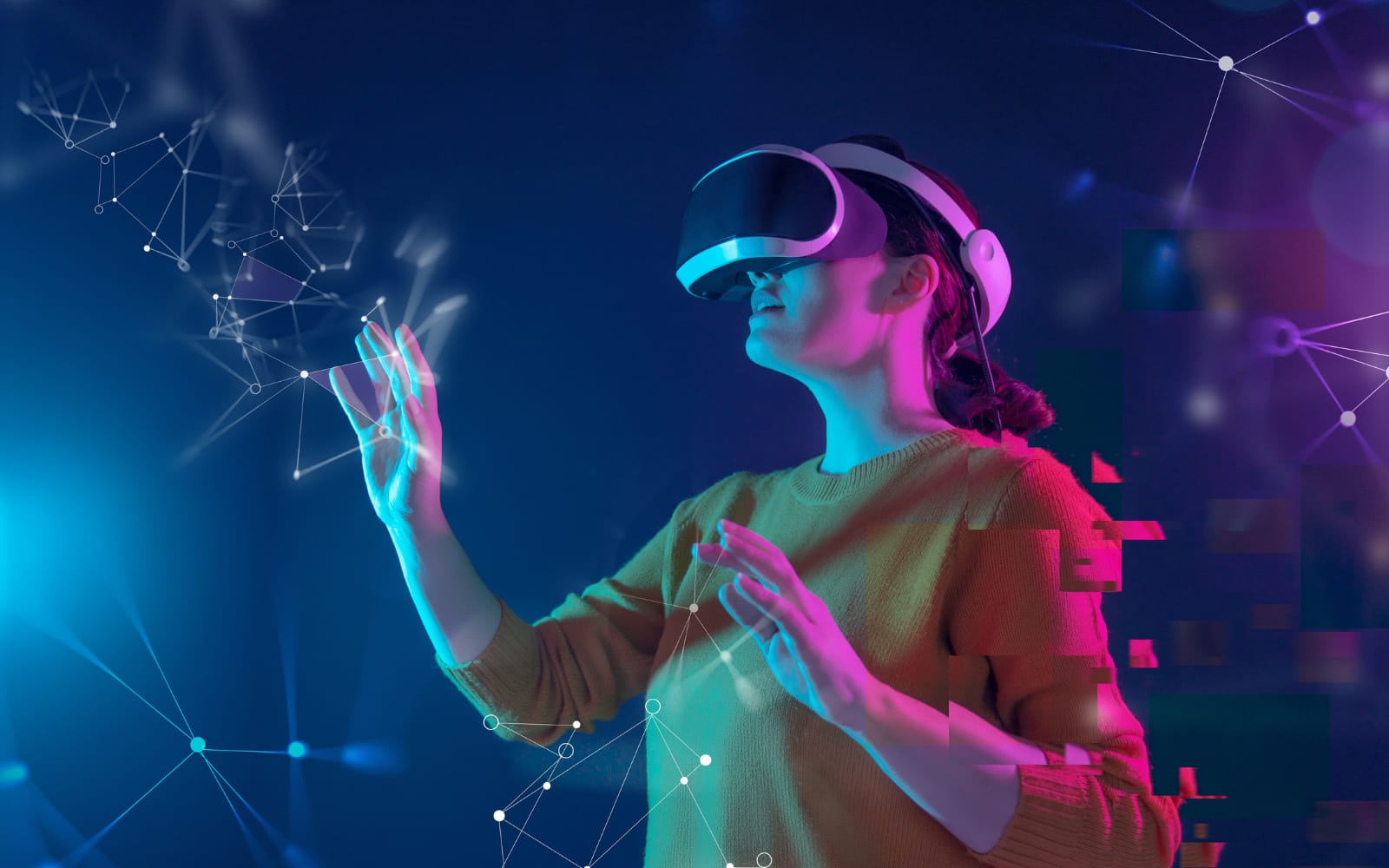The concept of the metaverse continues to capture the imagination of the tech community. As we navigate this uncharted territory, we'll explore its current state, development journey, and the key technological battlegrounds that define it. We'll also forecast the possible outcomes that may shape this virtual frontier, estimated to reach a market size of $700 billion to $900 billion by 2030.
The metaverse represents a complex network of interconnected virtual environments, offering immersive, collaborative, and interactive experiences. Its potential is nothing short of astonishing, with projections pointing to a market size of up to $900 billion by 2030. The major players in this landscape will likely emerge within the next decade as we move forward with the rapid advancement in technologies.
This brave new world transcends traditional digital boundaries, connecting virtual and real-world experiences. It has broad applications, including gaming, education, healthcare, and more.
As the metaverse evolves, we may witness a paradigm shift in how we interact with digital content. Virtual experiences could become integral to daily life, transforming work, leisure, and social interactions.
The Metaverse's Development Journey: Emerging From The Seed Stage

Despite its vast potential, the metaverse is in its early stages and is expected to remain in the seed stage for another 5 to 10 years. This period will be critical for development, exploration, and innovation. We're seeing big brands such as Apple, positioning themselves for this technological revolution with VR headsets designed to immerse the user into a seamless experience.
The metaverse is likely to consist of both interconnected and independent virtual worlds, each governed by private entities, rather than a single unified platform. If companies like Meta formally known as Facebook want to be successful in this space, they need interoperability in order to succeed. The thought of a monolithic company such as Meta trying to dominate the space is a deal-breaker for most users wanting to interconnect with and through various platforms.
Many crypto companies are developing platforms and applications that enable users to create and explore immersive, collaborative, and interactive environments that span digital and physical worlds. Here are some examples of these companies:
- Realm: This platform lets users create and explore their own personalized metaverses, where they can customize their realms with digital assets, NFTs, and interactive elements. Users can also monetize their realms by selling access, hosting events, or offering services. Realm has its own cryptocurrency, REALM, which is used for governance and transactions on the platform.
- Metafluence: A world that connects influencers, creators, and fans in the metaverse, where they can create and join communities, discover and support content, and earn rewards for their engagement. Metafluence has its own cryptocurrency, METO, which is used for governance and incentives on the platform.
- Decentraland: This is one of the oldest and most popular metaverse projects. It is a virtual world where users can create, explore, and trade land, buildings, art, and games. Decentraland has its own native token MANA, which is used for buying land and other assets on the platform.
These are just a small few examples of companies shaping the future of this fast-paced world. There are other companies like VictoriaVR which are developing its platform based on Unreal Engine, the same game engine that's behind popular gaming titles such as Fortnite, Gears of Wars, Unreal Tournament, and others.
Conclusion
The metaverse presents a thrilling and complex opportunity, filled with potential and challenges. Its current state, development trajectory, and technological battlegrounds offer a glimpse into a future where digital and physical realities intertwine. By understanding these aspects and anticipating future trends, we can position ourselves to engage with and thrive in this exciting new realm. The metaverse opens doors to a world where virtual experiences redefine our daily lives, reshaping how we live, work, and play.
We are still very early in this market, so patience is needed in order to see this entire space grow to monumental levels.
Matt is the founder of TechMalak. When he's not buried face-deep in the crypto charts you can find him tinkering with the latest tech gadgets and A. I tools. He's a crypto investor and entrepreneur. He uses a mixture of A.I and human thought and input into all his articles on TechMalak, further merging man with machine.





